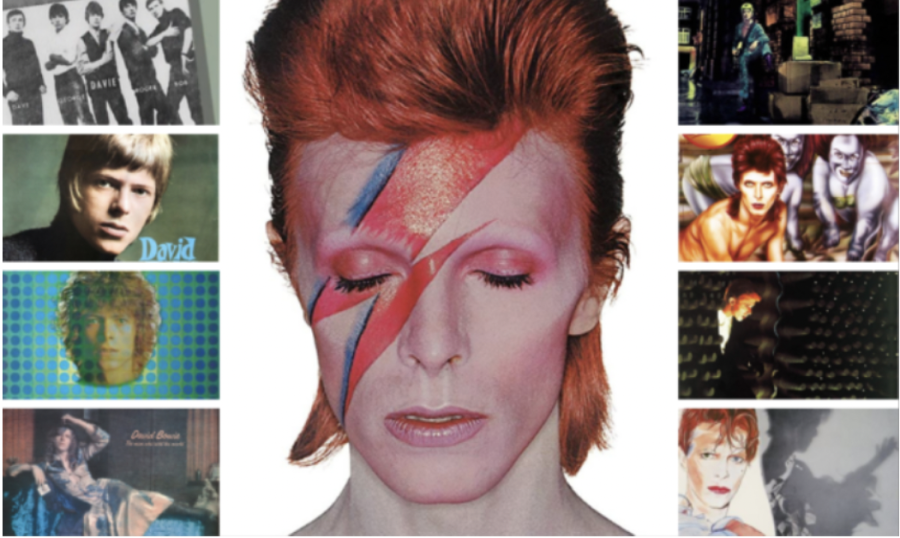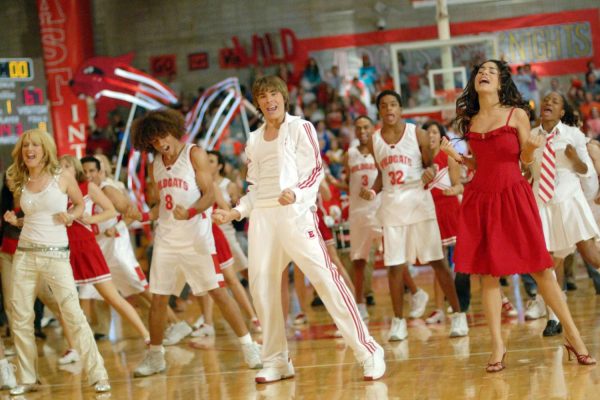David Bowie: A Star in Every way
“Who is he? What is he, man, woman robot… It’s DAVID BOWIE!” Freshly released and out of this world, Brett Morgen’s latest rock-doc, “Moonage Daydream,” is a sensation. If you’re not familiar with the icon David Bowie, he was mainly known for being a musical icon in the world of the 1960’s, 70’s and 80’s during the rise of pop, but more so he was a man of the arts. By expressing himself on stage through dynamic, eye-catching apparel, this pop star always seemed to be “ahead of his time” when it came to ideals about sexuality and style. While the whole film is narrated by the Starman himself, Morgen purposefully integrates many clips of Bowie speaking and reflecting on different parts of his life that guided his various personas and vibrant appearances. Most times the only breach between young and old Bowie’s narrations is the tone of his voice. While the film roughly follows his life in chronological order by album release dates, beginning in the late ’60s when his prime career was awakening, Morgen includes a crafty collection of concert footage, feature films, and a variety of his artistic inspirations that help capture a very Bowie-style media.
To document Bowie’s life the way he would have wanted, the Bowie Estate, trusted by his widowed wife Iman, released decades of unseen footage, personal interviews, poems, and some of Bowie’s personal art that he chose never to share with the world. Initially, Morgen decided to strip the film of any sort of dates or prior knowledge of what the world looked like during this time, this allowed Morgen the freedom to get a little playful with the style of the film. He states, “I wanted to create the David Bowie experience, which is sublime and enigmatic and mysterious, intellectually engaging and emotionally engaging.” Taking roughly two years just to take in all the footage he was given, Morgan describes the experience in the highest of spirits: “I mean, look at how beautiful he is to look at. And it doesn’t even come close to how beautiful his soul was.”
Bowie was a philosophical thinker, to say the least. He was “never impressed with virtuosity,” and valued living everyday in the moment, never taking a second of time for granted. He saw every opportunity as a chance to enhance himself: “All people, no matter who they are, all wish they’d appreciate life more. It’s what you do in life that’s important. Not how much time you have, nor what you wish you’d done.” Personally, this hit home. Bowie is so right. Sometimes we need to push ourselves to experience new things in order to grow and learn more about ourselves as people. This continuation will add on to our own different personas as we meet new people and continue to explore the world and our interests deeper.
After releasing his first hit single “Space Oddity” in ‘69, then the ‘Hunky Dory’ album in ‘71, and then the record “The Rise and Fall of Ziggy Stardust and the Spiders from Mars” in ‘72, these first major hits set the stage for Bowie’s extraterrestrial presence that immersed his career. By opening the film with clips of a dark space world from his last album, “Blackstar” released just three days before his death in 2016, viewers begin to immerse themselves in the coherent narrative interwoven with the chaos and disorder that was Bowie’s enchanting life.
Diving into the world of “Moonage Daydream” is a treat. Viewers experience Bowie through the progression of his multi-personas. Also referred to as Ziggy Stardust, Major Tom, Aladdin Sane, and The Thin White Duke, this man of many faces firmly believed in personal growth and constant change. In the film, he describes, “I put myself in predicaments and dangerous situations as a way to help myself grow.” In his early years, he never allowed himself to be too comfortable with himself or the living space he inhabited. He felt that unease and awkwardness brought him a new level of creativity, leading him to discover new sides of himself. “I’m a collector,” he says, “I’ve always collected things, personalities, ideas.” Elaborating, Bowie says he chose to move to LA because he knew he hated it there, and that constant push to see the world through a new lens allowed him to express himself in the various ways he did. At age 33, a talk show host describes, “When he no longer feels challenged by one art form, he moves onto the next. It’s as if David Bowie grew up running before he learned to walk.”
Although a big crowd was never important to him, as he reminisces about life goals in his early twenties to be something new arguably during the greatest age of rock was fulfilled, to say the least. The man had people rendered speechless and in tears when they were in his presence. Many clips from famous old films that were very expressionistic and futuristic, like “Metropolis” and “Trip to the Moon,” all situated him in an out-of-this-world aura.
This rock-doc is one of a kind, a true masterpiece. It presents a coherent narrative that watchers get to experience and perceive, all while maintaining this interwoven theme of a chaos and disorder of the universal god-send that was David Bowie.

Hello all, I’m Lily Cierpial and I’m a junior this year. This is my second year on the journalism staff, and I'm so excited to be one of the two copy...







